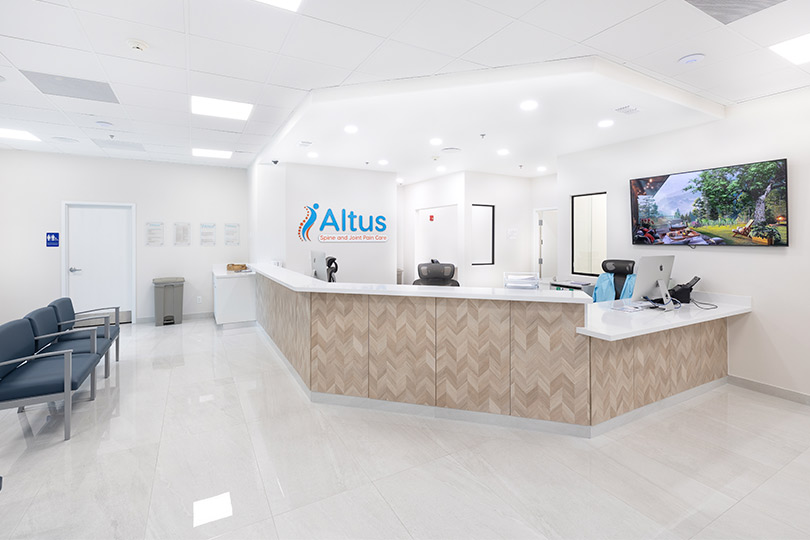The Complete Guide to Regenerative Medicine in South Texas
A new treatment has emerged for individuals in the Rio Grande Valley (RGV) struggling with chronic pain. Regenerative medicine is transforming how joint conditions and pain are managed, offering solutions that go beyond simply masking pain. This innovative approach uses the body’s natural healing mechanisms to repair and regenerate tissue, offering long-term relief without major surgery or a lifelong reliance on medications.
Chronic joint pain affects millions of Americans, limiting mobility, decreasing quality of life, and often leading to dependency on pain medications with potentially harmful side effects. Traditional approaches, ranging from over-the-counter pain relievers to major surgical interventions, may not provide lasting solutions for many patients. This reality has driven the exploration of regenerative treatments that harness the body’s natural healing capabilities to address joint issues at their source rather than simply masking symptoms.
In the RGV, where an active lifestyle is valued year-round, the growing availability of regenerative options like platelet-rich plasma therapy, stem cell treatments, and other biological approaches represents a significant advancement in alternative pain management. These treatments aim to stimulate and accelerate the body’s own repair mechanisms, potentially offering longer-lasting relief and improved function compared to conventional methods.
Altus Spine & Joint Pain Care in Mission and McAllen are leading the way with regenerative options that help patients regain mobility and quality of life while avoiding the risks associated with traditional pain management.
Understanding Regenerative Treatments for Joint Care

Regenerative medicine represents a paradigm shift in treating joint pain and injuries, unlike traditional approaches that focuses on symptom relief using:
- Over-the-counter painkillers
- Corticosteroid injections
- Invasive surgical procedures
By addressing the root causes of joint degeneration and injury, regenerative medicine takes a deeper approach. It stimulates regeneration by delivering cells, tissues, or growth factors that restore function lost due to aging, disease, or injury. These treatments help the body heal itself from within.
Key Regenerative Treatments Available in the RGV
To understand the advantages of regenerative medicine, it helps to explore the most widely used options offered at Altus Spine & Joint Pain Care.
| Treatment Type | How It Works | Best Suited For |
| Platelet-Rich Plasma (PRP) | Uses platelets extracted from your blood to release bioactive proteins that promote healing and reduce inflammation. | Mild to moderate osteoarthritis, tendon and muscle injuries |
| Stem Cell Therapy / Orthobiologics | Uses regenerative cells (often from bone marrow) to repair damaged tissue and reduce inflammation. | Severe joint degeneration, cartilage damage, complex musculoskeletal injuries |
| Prolotherapy | Involves injecting a natural irritant (like dextrose) to stimulate healing at the injection site. | Ligament laxity, chronic tendonitis, joint instability |
| Viscosupplementation | Delivers hyaluronic acid into joints to restore joint fluid thickness and function. | Osteoarthritis (especially in the knee) |
These treatments differ significantly from traditional joint care, which often prioritizes pain suppression over tissue healing. Regenerative therapies address the underlying causes of joint and musculoskeletal pains. It aims for longer-lasting outcomes and functional improvement, all with minimal recovery time.
Benefits of Choosing Regenerative Treatments

These innovative therapies have shown promising results for conditions including osteoarthritis, tendonitis, bursitis, plantar fasciitis, rotator cuff tears, and even degenerative disc disease. By focusing on tissue regeneration rather than just pain management, these treatments represent a new frontier in joint care. Many patients choose these alternatives for their significant advantages over traditional methods:
- Fater Recovery
Most procedures are outpatient with little or no downtime, allowing patients to return to daily activities quickly. - Minimized Risks
Regenerative therapies typically avoid the complications associated with surgery and general anesthesia. - Reduced Medication Dependence
By addressing the root cause, patients often need fewer pain medications over time. - Improved Quality of Life
Patients report greater mobility, less discomfort, and enhanced function following treatment. - Cost-Effective in the Long Run
Although many therapies are self-pay, their long-term benefits often outweigh the repeated costs of short-term symptom management.
Important Considerations Before Choosing Regenerative Care

What You Should Know Before Starting
While regenerative treatments are promising, they’re not ideal for everyone. Here are factors to consider:
- Insurance Coverage
Most regenerative procedures are not yet covered by insurance and must be paid out-of-pocket. - Health and Age
Factors such as age, general health, and the severity of joint degeneration can affect treatment success. - Expectations
Not all patients see dramatic results; outcomes depend on the specific condition and treatment plan.
Work with experienced professionals who specialize in regenerative care to evaluate whether you’re a good candidate. Personalized treatment plans maximize success and help set realistic goals for recovery.
The Future of Joint Care in the Rio Grande Valley
As regenerative medicine becomes more accessible and better understood, its role in joint care is expected to grow throughout the RGV. Treatments like Regenexx, PRP, and bone marrow concentrate therapy are reshaping the landscape of orthopedic and spine care.
These minimally invasive, biologically driven treatments are at the forefront of a new era in pain management; one focused on repair, not just relief.
A Regional Leader in Advanced Pain Management

At Altus Spine & Joint Pain Care in Mission and McAllen, TX, we offer advanced regenerative treatments tailored to your needs. Whether you’re dealing with arthritis, tendon injuries, or back pain, our experienced team is here to help restore your mobility and improve your quality of life, without relying on long-term medications or invasive procedures.
Book your personalized consultation today and start your journey toward lasting relief and renewed movement.





